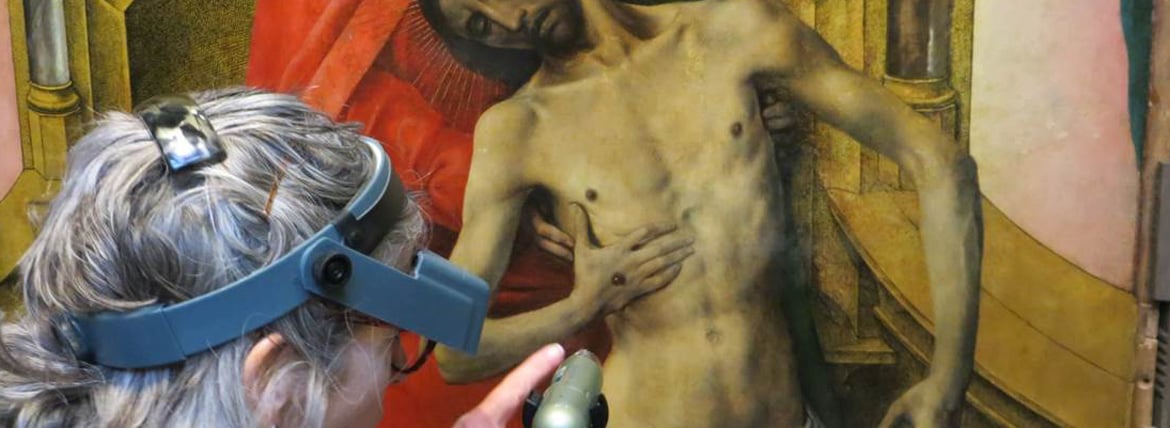
The Trinity Panels by Hugo van der Goes
Move to new location at Scottish National Gallery provides opportunity for study
The make-up of the panels
The panels, each measuring approximately one metre wide and two metres high, are made of four vertical boards of oak glued together with wooden dowels at intervals across each join. One of the dowels is visible here in the x-ray of the king’s ermine cape (above left); the grain of the dowel is seen running perpendicular to that of the panel.
The unpainted edges of both panels are preserved and the top edge of the king’s panel is shown above right. The raised lip or barbe of the chalk ground is visible at the top of the red paint and indicates that they would originally have had ‘engaged’ frames, which were attached before painting began and removed at a later date. The frames in which they are now displayed date from 1935.
Each of the panels would have been prepared with thin layers of chalk and animal glue, smoothed down to an ivory-like finish. Onto this the artist laid out the composition in a dilute black paint or ink using a brush. In infra-red light, this underdrawing is visible due to the high carbon content.
The shape of the brushstrokes is quite clear in this detail of Christ’s torso on the left, where diagonal hatching strokes follow the contours of the body in the areas of shadow.
The brushstrokes vary in length and form interlocking planes to describe the form.
The initial laying in of the figure is visible at his hand where the thumb and forefinger have been moved further apart at the painting stage.
Much broader, looser lines are laid in first to position the main elements of the composition, as shown on the right in Christ’s loincloth where the artist has made some changes between the drawing and painting stage.
Here, the hatching strokes are sketchy and less regular than those of the torso.
In the drapery of the angel playing the organ (on the left), the hatched underdrawing is remarkably controlled and regular.
It is followed closely during the painting stage.
On the right, showing the angel's sleeve, the variety of thickness, length and weight of the lines is evident with the densest area of hatching in the deepest shadow below the wing feathers.







